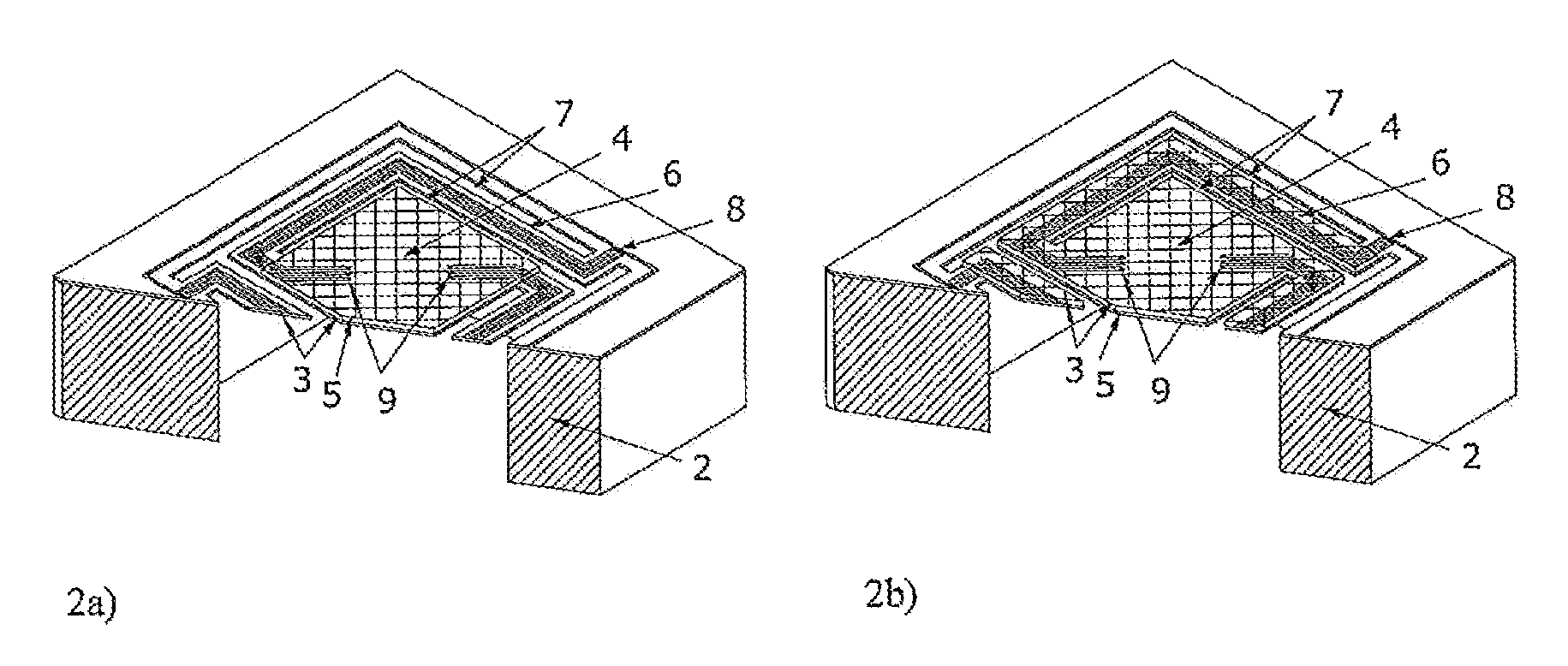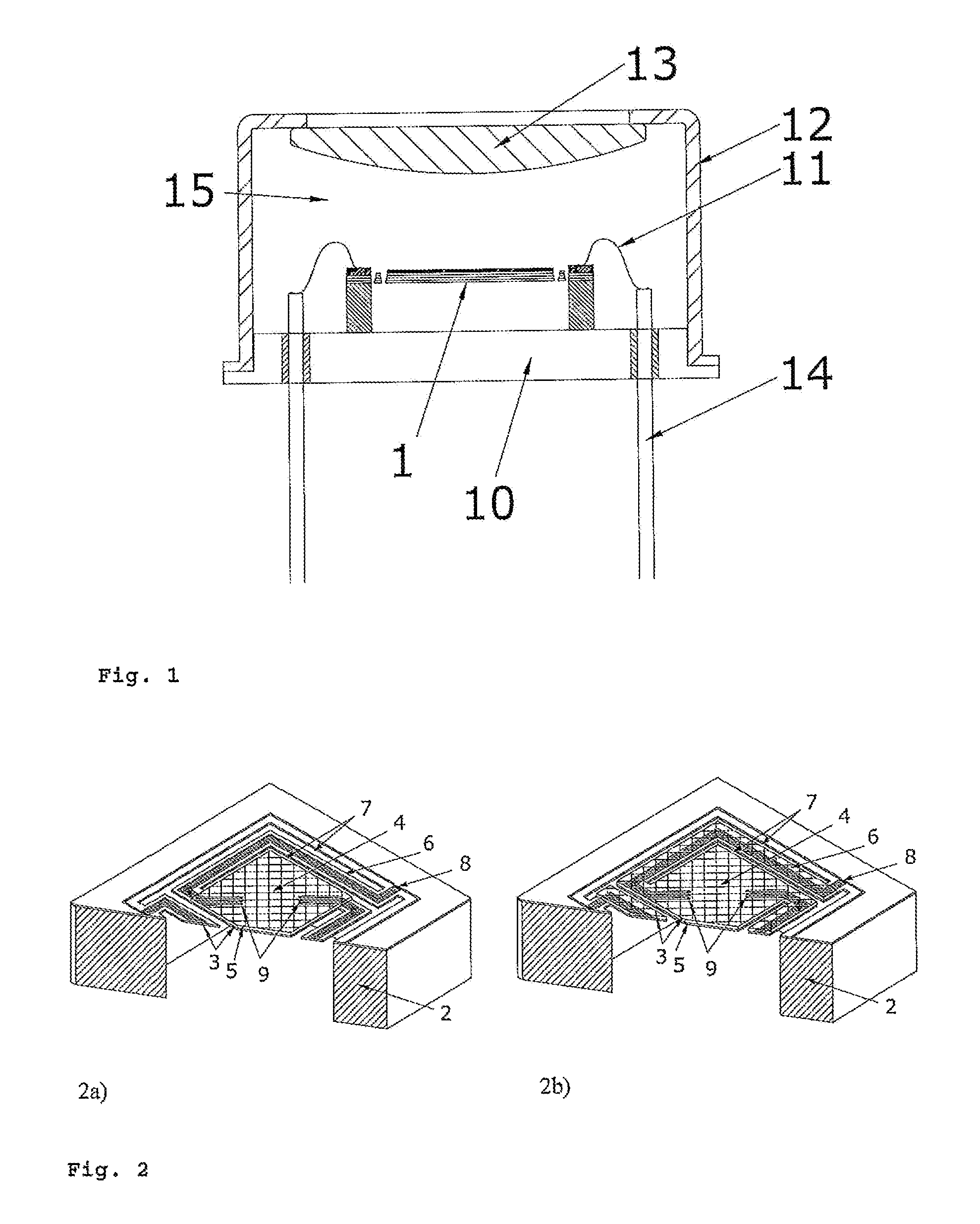Thermopile infrared sensor by monolithic silicon micromachining
a technology of infrared sensor and monolithic silicon, which is applied in the field of thermal infrared sensors, can solve the problems of low residual gas pressure or fill gas cost effective housing structure, insufficient high sensitivity, and slits in the membrane, etc., and achieves high thermal resolution capacity, small chip size, and high degree of filling
- Summary
- Abstract
- Description
- Claims
- Application Information
AI Technical Summary
Benefits of technology
Problems solved by technology
Method used
Image
Examples
first embodiment
[0095]Two additional embodiments are presented. In the first embodiment the pressure of the surrounding gas is reduced. The best sensitivity is achieved when a vacuum housing structure is used, but intermediate steps are also conceivable. The drawback with the vacuum housing is that the entire housing must be absolutely hermetically gas tight and no change in the gas pressure may occur over several years. This approach necessitates a complex and, thus, costly housing technology.
second embodiment
[0096]In the second embodiment the housing is filled under normal pressure with a gas of lower thermal heat conduction, such as e.g. krypton or xenon. This approach also increases the sensitivity of the sensor, but the requirements with respect to the housing technology are lower.
[0097]The choice of embodiment as the vacuum housing or with a gas filling of a gas that is a poor heat conductor also has an effect on the optimization of the sensor chip design. Thus, simulation calculations show that the optimal number of thermoelements when using vacuum housing technology should be very low. Preferably no more than four to eight thermoelements per sensor element should be used in order to achieve a detectivity of the thermopile that is as high as possible. Then these thermoelements are distributed among the number of connecting webs 6 that support the membrane 3.
[0098]If, in contrast, a housing structure with a gas that is a poor heat conductor is chosen, then a higher number of thermoe...
PUM
 Login to View More
Login to View More Abstract
Description
Claims
Application Information
 Login to View More
Login to View More - R&D
- Intellectual Property
- Life Sciences
- Materials
- Tech Scout
- Unparalleled Data Quality
- Higher Quality Content
- 60% Fewer Hallucinations
Browse by: Latest US Patents, China's latest patents, Technical Efficacy Thesaurus, Application Domain, Technology Topic, Popular Technical Reports.
© 2025 PatSnap. All rights reserved.Legal|Privacy policy|Modern Slavery Act Transparency Statement|Sitemap|About US| Contact US: help@patsnap.com



